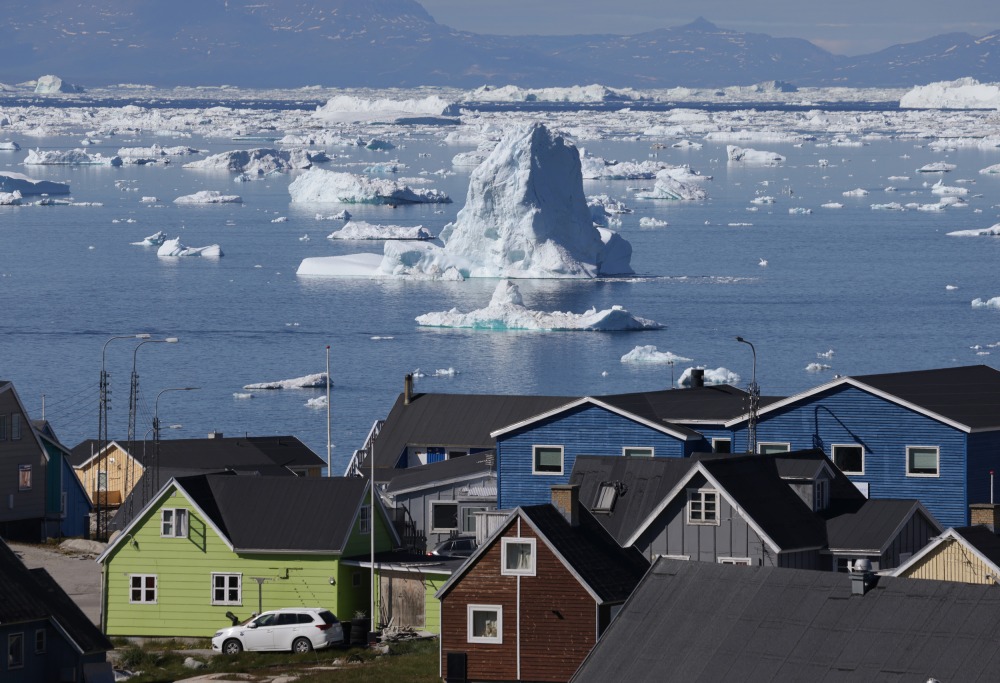by EVAN BUSH

A new report describes the dire state of Earth’s snow and ice, suggesting several major tipping points are likelier than scientists once thought.
The Summary
- A new report describes the dire state of Earth’s snow and ice.
- Among other findings, it warns that several key climate tipping points appear more likely to be reached than previously thought.
- They include ice melt that could cause severe sea-level rise and the collapse of a crucial ocean current that governs how heat cycles in the Atlantic Ocean.
Venezuela lost its final glacier this year. The Greenland Ice Sheet is losing, on average, 30 million tons of ice per hour. Ice loss from the Thwaites Glacier, also known as the “Doomsday” glacier because its collapse could precipitate rapid Antarctic ice loss, may be unstoppable.
These are just a few of the stark findings from more than 50 leading snow and ice scientists, which are detailed in a new report from the International Cryosphere Climate Initiative.
The report summarizes the state of snow and ice in 2024: In short, experts agree, it’s been a horrible year for the frozen parts of Earth, an expected result of global warming. What’s more, top cryosphere scientists are growing increasingly worried that the Atlantic Meridional Overturning Circulation (AMOC), a key ocean current that governs how heat cycles in the Atlantic Ocean, is on a path toward collapse.
A rapid halt to the current would cause rapid cooling in the North Atlantic, warming in the Southern Hemisphere and extreme changes in precipitation. If that happens, the new report suggests, northern Europe could cool by about 5.4 degrees Fahrenheit in a decade.
The report highlights a shift in consensus: Scientists once thought tipping points — like the collapse of AMOC — were distant or remote possibilities. Now, some of those thresholds are appearing more likely to be crossed, and with less runway to turn the situation around.
“The latest science is not telling us that things are any different to what we knew before, necessarily, but it’s telling us with more confidence and more certainty that these things are more likely to happen,” said Helen Findlay, an author of the report and a professor and biological oceanographer at Plymouth Marine Laboratory in England. “The longer we record these things, and the longer we’re able to observe them and start to understand and monitor them, there’s more certainty in the system and we start to really understand how these tipping points are working.”
Last month, 44 leading scientists wrote in an open letter to leaders of Nordic countries that the collapse of AMOC remained “highly uncertain” but that evidence in favor of such a collapse was mounting, and risks have been underestimated. Dramatic changes to the AMOC, they warned, would “likely lead to unprecedented extreme weather” and “potentially threaten the viability of agriculture in northwestern Europe.”
The new report similarly draws attention to the risk of AMOC collapse.
Additionally, it projects that roughly two-thirds of glacier ice in the European Alps will be lost by 2050 if global greenhouse gas emissions keep their pace. Already, an estimated 10 million people are at risk of glacial outburst floods in Iceland, Alaska and Asia — a phenomenon already occurring as meltwater collapses ice dams and rapidly floods downstream. If high emissions continue, the report adds, models suggest that sea level could rise by roughly 10 feet in the 2100s, imperiling parts of many coastal cities.
The report was released as world leaders gathered Monday in Baku, the capital of Azerbaijan, for the United Nations’ COP29 climate conference.
“Timing is everything,” said Julie Brigham-Grette, a geosciences professor at the University of Massachusetts Amherst and an author of the new report.
She said the group hopes to rattle world leaders to attention: “The sense of urgency couldn’t be higher. We’ve been talking about urgency for a decade. It almost starts to feel like a useless word. What’s more than ‘urgent?’ ‘Catastrophic?’ We’ve run out of ways to describe it.”
To date, the report says, world governments are falling short on the pledges they made to reduce greenhouse gas emissions as part of the Paris Agreement.
Even if they were on track, those commitments are insufficient to reach global climate goals, the authors say. On paper, the world’s pledges would limit the rise in global temperatures to about 2.3 degrees Celsius (4.1 degrees Fahrenheit) this century. That’s well short of the goal to cap warming at 1.5 degrees C.
Global temperatures are currently on pace to rise more than 3 degrees Celsius (5.4 degrees Fahrenheit), on average.
NBC News for more
